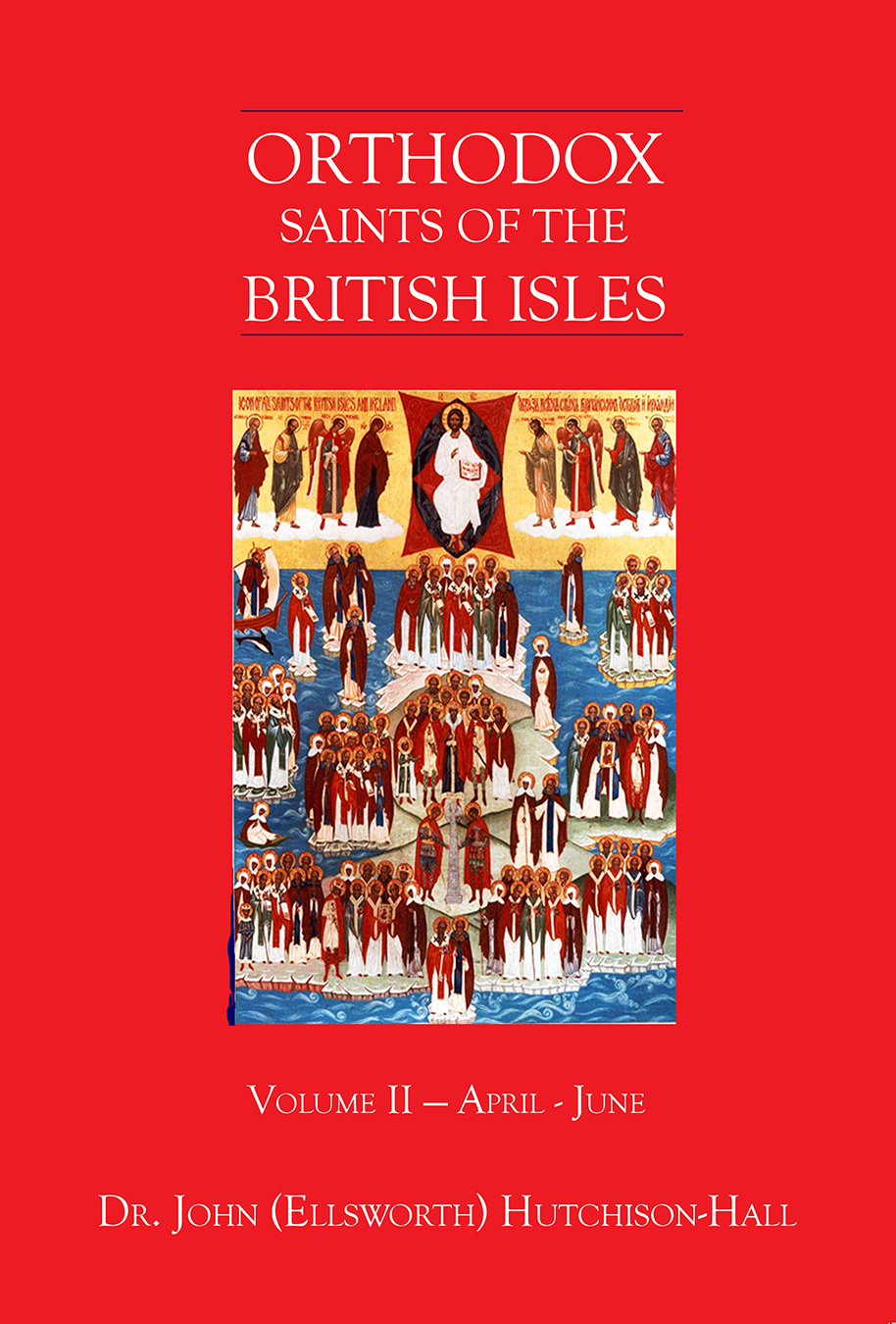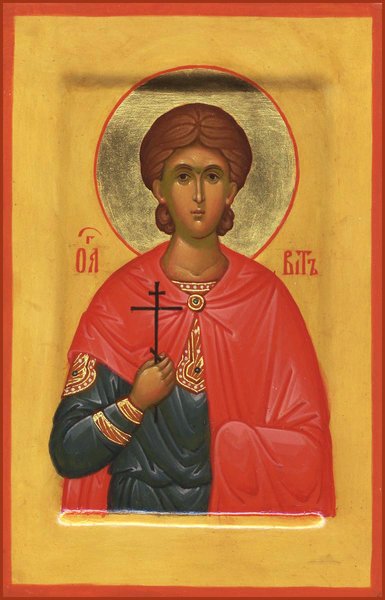
Orthodox Saints of the Pre-Schism
See of Rome
15th June (NS) — 2nd June (OS) 2024
ADALGIS (ADELGIS, ALGIS) of THIÉRARCHE, a disciple of St. Fursey (16th January) originally from Ireland who worked to enlighten the areas of Arras and Laon in Picardy (France). St. Adalgis also founded a small monastery at Thiérarche in Picardy, where the village of Saint Algis is today. St. Adalgis reposed circa 686.
BODFAN (BOBOUAN) of WALES, (Seventh Century), St. Bodfan is the patron saint of Abern (present-day Abergwyngregyn in Gwynedd) Wales, believed to have lived at some point in the seventh century. There are no particulars of his life extant, aside from the tradition that he, along with his father and other members of his family, were impelled to embrace monastic life following the great flood that created Beaumaris Bay.
ERASMUS (ELMO, ERARMO, ERMO) of FORMIAE, a Bishop of Formiae in Campania (south-western Italy) who was martyred circa 303 by disembowelment during the Diocletianic Persecution. According to one legend, St. Erasmus continued preaching when a bolt of lightning struck the ground beside him. Sailors took to asking for his intervention during electrical storms, leading to electrical discharges over the sea being called 'St Elmo's fire'.
EUGENE, seventy-fifth Pope of Rome (655–657). St. Eugene acted as Vicar for his predecessor, Pope St. Martin I (13th April), during St. Martin’s exile. When word of St. Martin’s martyrdom reached Rome, St. Eugene was quickly chosen to succeed him. St. Eugene is best remembered for his pastoral care and charity, especially for those most in need. He also skilfully and courageously fought the Monothelite heresy. St. Eugene reposed in 657.
MARCELLINUS and PETER the EXORCIST, a priest and exorcist respectively, martyred during the Diocletianic Persecution just outside of Rome. 304 is recorded as the year of their martyrdom.
MARTYRS of LYONS and VIENNE, a group of forty-eight Christians martyred around Lyon, Vienne, and environs (France). During the persecutions under Emperor Marcus Aurelius (r. 161–180), pagan mobs set upon them, and brought them to the authorities to be tried for their faith. All were convicted and sentenced to die is various ways over the year of 177. Most of the names of these martyrs have been lost to time, though these few have survived: Alexander, Attalus, Biblis (Biblides), Blandina, Cominus, Epagathus, Maturus, Photinus (Pothinus), Ponticus, Sanctius (Sanctus), and Vetius.
NICHOLAS PEREGRINUS (the PILGRIM), while still a teenager, St. Nicholas moved from Greece to Apulia Italy. There he roamed the streets carrying a cross, and crying 'Kyrie eleison'. As he wandered many followed and chanting along with him, especially children, though most people looked upon him as being mentally ill, not realising he was in fact a Fool-for-Christ. Following his repose in 1094, at only nineteen years of age, countless miracles took place at his grave, and even the most sceptical realised he was indeed a saint.
ODA (ODO) the GOOD, St. Oda the Good was born in East Anglia, England to Danish pagan parents. At some point, he embraced Christianity and received monastic tonsure at the Abbey of Saint Benedict on the Loire (l’abbaye de Saint-Benoît-sur-Loire - Fleury Abbey) in Gaul (France). After returning to England he was consecrated Bishop of Ramsbury in 927, and in 942 was made the 22nd Archbishop of Canterbury. As Archbishop, he played a prominent role under Kings Edmund I (r. 939–946) and St. Edgar the Peaceful (r. 957–975) (8th July). St. Oda was very active in restoring the cathedral buildings and in raising the morals and discipline of the clergy. He was also a staunch defender of the privileges of the Church, thus paving the way for monastic restoration under SS. Dunstan (19th May), Oswald (28th February), St. Oda's nephew, and Æthelwold (1st August). All of this earned him the title “The Good”. St. Oda reposed 2nd June 959, which is the common Feast date on the Orthodox calendar, though on many older Western calendars it is listed as 4th July.
Get your copy of Orthodox Saints of the British Isles today.
Available at Amazon or your favourite e-bookstore.
ABRAHAM of CLERMONT, St. Abraham was captured by a group of outlaws in Egypt and enslaved by them for five years before he was able to escape. He made his way to Europe, and settled as a hermit near Clermont in Gaul (France). At some point St. Abraham was ordained to the priesthood, and later was the Founding-Abbot of the Monastery of St. Cyriacus (monastère de Saint-Cirgues à Clermont) near present-day Clermont-Ferrand, France. St. Abraham reposed circa 480.
BENILDIS of CÓRDOBA, one of the Martyrs of Córdoba from the reign of Emir Muhammad I of Córdoba (r. 852–886), St. Benildis was so moved by the martyrdom of St. Athanasius of Córdoba (14th June) the previous day that she publicly proclaimed Christ, and the following day was burnt at the stake. Following her martyrdom in 853, St. Benildis’ ashes were thrown into the Guadalquivir river as was the case with many of her fellow martyrs.
CONSTANTINE of BEAUVAIS, a monk at the Abbey of St. Peter of Jumièges (abbaye Saint-Pierre de Jumièges) in Jumièges, Normandy (France), and disciple of its founder, St. Philibert of Jumièges (20th August). St. Constantine was later consecrated Bishop of Beauvais in Picardy (northern France). He reposed circa 706.
DOMITIAN and HADELIN of LOBBS, fellow monks at the the Abbey of St. Peter of Lobbes (abbaye Saint-Pierre de Lobbes), in present-day Belgium. At Lobbes they were both disciples of St. Landelin of Lobbes (vide infra). Both saints reposed circa 686.
EADBURH (EADBURGA, EDBURGH) of WINCHESTER, St. Eadburh, the daughter of Edward the Elder, King of the Anglo-Saxons (r. 899–924) and his third wife Eadgifu (Edith) of Kent (†c. 966), was placed in the monastery at Winchester England whilst still a child. During her life St. Eadburh was revered for the holiness of her life and renowned for her gentleness and humility. It is not known for sure, but she may have served as Abbess of the monastery at some point. St. Eadburh reposed in 960, and was buried in the Abbey church. In 972 some of her relics were translated to Pershore Abbey in Worcestershire, England, where many miracles are reported to have happened at her shrine.
LANDELIN (LANDELINUS) of CRESPIN, St. Landelin was a repentant robber who became a priest-monk. He founded several monasteries in present-day France and Belgium, beginning with the the Abbey of St. Peter of Lobbes (abbaye Saint-Pierre de Lobbes — Hainaut, Belgium) where he was the spiritual father of SS. Domitian and Hadelin of Lobbs (vide supra). St. Landelin also founded monasteries at Aulne (Belgium), Walers (France), and Crespin (France). St. Landelin reposed in 686.
MELAN of VIVIERS, Bishop of Viviers in the Languedoc (southern France) from 519 until his repose circa 549.
TRILLO (DRILLO, DREL) of WALES, St. Trillo, the son of a Breton chieftain, went to Wales with St. Cadfan (1st November). He is the founder and patron saint of the churches at Llandrillo in Gwynedd and Rhos-on-Sea (Llandrillo yn Rhos) in Conwy County Borough, Wales. St. Trillo reposed in the early part of the sixth century.
VITUS, MODESTUS, and CRESCENTIA, according to legend of dubious veracity, St. Vitus was the son of a Sicilian senator by the name of Hylas. St. Vitus was brought to Christ at the age of twelve by his nurse St. Crescentia and tutor St. Modestus. His conversion so enraged his pagan father that Hylas had SS. Vitus, Modestus, and Crescentia arrested, and scourged. The three saints managed to escape their captivity and flee Sicily, first to Lucania, then Rome. In Rome, they were once again arrested, this time on a charge of sorcery and failure to perform pagan sacrifices. Following torture, the saints were condemned to death circa 303. First, they were fed to lions, and when the lions refused to touch them, they were thrown into a vat of boiling oil.
For reasons no longer known, in sixteenth century Germany it was believed that dancing before a statue of St. Vitus on his feast day would give the dancer a years’ good health. In time, the dancing became so frenzied that onlookers thought the dancers were actually afflicted with the neurological disorder Sydenham chorea, which came to be colloquially known as ‘St. Vitus Dance’.
VOUGA (VOUGAR, VEHO, FEOCK, FIECH) of LESNEVEN, a sixth century bishop of an unknown diocese in Ireland. St. Vouga retired from his See, went to Brittany (France) and settled near Lesneven where he lived out the rest of his years as a hermit.
Prior to the Schism the Patriarchate of Rome was Orthodox, and fully in communion with the Orthodox Church. As Saint John of Shanghai and San Francisco +1966 said “The West was Orthodox for a thousand years, and her venerable Liturgy is far older than any of her heresies”.
Details of British Saints excerpted from Orthodox Saints of the British Isles.
Details of continental saints from these sources.
In many cases there are several spelling versions of the names of saints from the British Isles. I use the Oxford Dictionary of National Biography version as the primary version with the more prevalent version in parenthesis e.g. Ceadda (Chad) of Lichfield.


